Article Chapters
Coatings play a vital role in protecting surfaces and improving their appearance. But according to the material elements, they can be divided into organic and inorganic coatings. You may be wondering what is organic coating and what is inorganic coating. Follow me to learn about them and see the differences between organic coatings and inorganic coatings, how to choose between them, and whether they can be used together. Understanding these aspects will help you make an informed decision when choosing a coating for your project.
What is Organic Coating?
Organic coatings are a type of coating formed by carbon-based polymeric chains derived from natural (vegetable, animal) or synthetic matter. These coatings are widely used and applied to surfaces such as metal, wood and concrete to enhance appearance and durability. Whether you need a decorative finish or specific properties such as weather resistance, moisture resistance or chemical resistance, organic coatings can be tailored to meet actual decorative or specific technical requirements.
One of the main advantages of organic coatings is that they are environmentally friendly. Many organic coatings are water-based and have lower levels of volatile organic compounds (VOCs), making them safer for the environment and indoor air quality. Of course, some oil-based coatings inevitably still contain higher levels of harmful chemicals. By choosing organic coatings, you are not only protecting the surface, but also doing your part for the earth and ensuring a safer working environment.
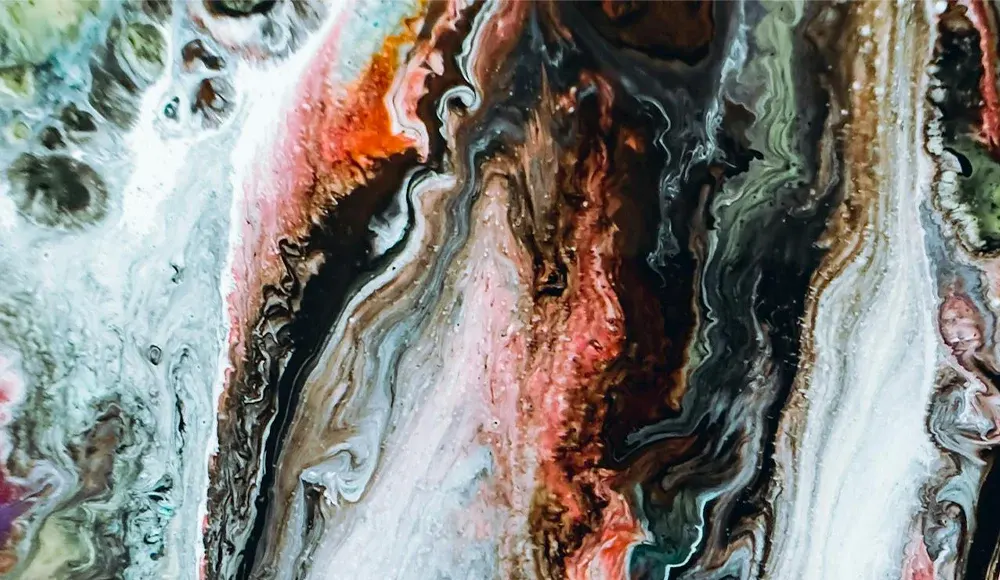
Composition of organic coatings:
Organic coatings are usually composed of solvents, resins (binders), pigments and various additives such as driers, hardeners, stabilizers, surfactants and dispersants. Resins, usually dissolved in solvents, play a key role in forming a protective barrier against corrosion and oxidation, such as: (acrylics, alkyds, epoxies, polyesters, polyurethanes, etc.). The color, opacity, mechanical properties, and barrier properties of the coating depend on the chemical makeup of the dispersed pigments, the pigment volume concentration, and the critical pigment volume concentration.
Depending on the specific application, these coatings can be applied in a single or multiple layers, in liquid or powder form. From rust prevention to abrasion resistance, organic coatings serve as a reliable barrier in a variety of industries.
Practical Applications
Organic coatings not only protect, but also customize surfaces with gloss, texture, and specific features such as UV resistance or enhanced durability. Paint on the wall? That’s an organic coating. Manufacturers choose and apply these coatings to ensure that the product can withstand environmental exposure while still maintaining beauty.
In short, organic coatings provide a flexible, environmentally friendly solution to protect and beautify surfaces, whether you are protecting metal from rust or adding a smooth finish to wood surfaces.
What is Inorganic Coating?
Inorganic coatings, also known as mineral coatings. Usually refers to a protective layer made of materials like vitreous enamels, ceramic thermal barriers, phosphate layers, chromate conversion coatings, or anodized layers. Inorganic coatings or mineral coatings are an effective solution to environments threatened by heat, chemicals, and UV radiation. Unlike organic coatings, they are known for their extreme durability, especially in heavy traffic and harsh conditions.
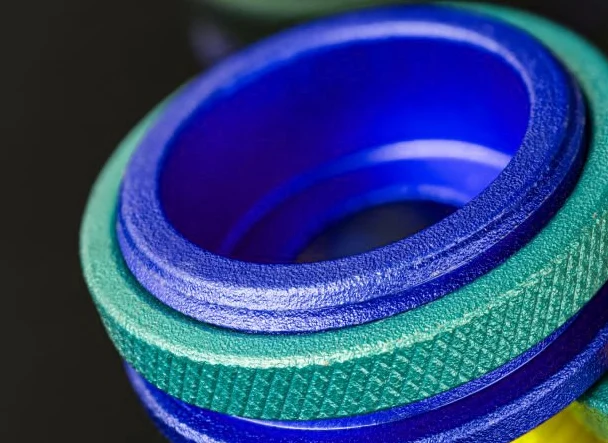
Composition of Inorganic Coatings:
Inorganic coatings differ from organic coatings because they rely on minerals such as silica, alumina, and titanium dioxide instead of carbon-based compounds. These minerals are often combined with other additives to improve adhesion, flexibility, and other performance characteristics. Types include anodizing, chromating, phosphating, nitriding, and passivation films. Chemical processes convert the metal surface into a thin film of metal oxides or compounds. Different coatings offer unique benefits and properties.
Advantages:
- Corrosion resistance: Inorganic coatings effectively protect substrates from chemicals and environmental factors.
- Heat resistance: Some inorganic coatings can withstand extreme temperatures, making them ideal for high-temperature environments.
- Abrasion resistance: Provides a strong protective layer that reduces physical wear and extends the life of the material.
- Environmentally friendly: They are non-flammable and contain no volatile organic compounds (VOCs), making them environmentally friendly.
From aerospace and automotive to construction and medical devices, inorganic coatings are trusted in demanding industries. They can improve surface performance and extend the life of critical components, making them invaluable for projects that require durability.
What are the Common Types of Organic coatings?
Organic coatings can be classified into many categories based on their polymer type: vinyl, acrylic, alkyd, polyurethane, epoxy, and more. But each has specific uses in different industries, and understanding their advantages can help you make the right choice for your project.
- Vinyl Coatings: Vinyl coatings are the top choice for corrosion and chemical resistance. You’ll often see them in industrial settings, such as coating pipes and tanks. They act like a shield, protecting metal from harsh environments and extending its life.
- Acrylic Coatings: Acrylic coatings are the top choice for color retention and UV resistance, making them ideal for outdoor use. From automotive painting to building exteriors, acrylic coatings are durable and provide long-lasting vibrant colors. Acrylics are widely used, especially in water-based coatings.
- Chlorinated Rubber Coatings: Need waterproofing? Chlorinated rubber coatings are ideal for areas that are frequently exposed to water, often used in swimming pools, marine structures, and places with high humidity. These coatings form a strong moisture barrier, ensuring long-term protection.
- Alkyd Coatings: Alkyd coatings are all-around coatings that strike a balance between performance and price. They are versatile and can be used on furniture, decoration, and even some industrial machinery, offering good adhesion, durability, and moisture resistance. The only downside is that they take longer to dry compared to other coatings.
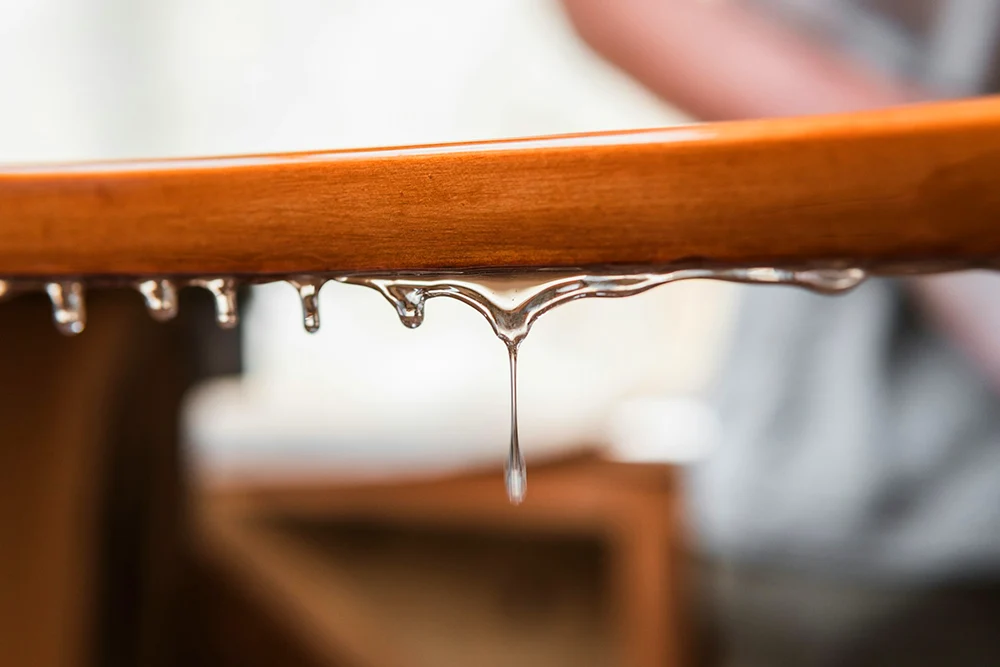
- Silicone Resin Coatings:When it comes to high temperature resistance, silicone resin coatings are unmatched. They are fire-resistant vests for exhaust systems, engine parts, and any surface exposed to extreme heat. Their thermal stability ensures integrity and protection even when heated.
- Amino Resin:Amino resins are tough and chemically resistant, making them ideal for high-use surfaces such as tabletops and automotive painting. They increase durability without sacrificing appearance.
- Polyurethane Coatings:Polyurethane coatings are heavy-duty coatings that offer excellent resistance to corrosion, abrasion, chemicals and weathering. Whether it’s high-traffic floors or surfaces that require solvent resistance, polyurethane is the best choice for durability. Depending on the needs of the polyurethane coating application, expert formulators create primers, midcoats, or topcoats with different functional properties based on the functionality and molecular weight of the different substances.
- Phenolic Alkyd Coatings: For marine environments or areas exposed to chemicals, phenolic alkyd coatings are a reliable choice. They offer strong moisture and chemical resistance, protecting wood and metal surfaces.
- Epoxy Coatings: Epoxy coatings are known for their durability and strong bonding properties. They are used in a wide range of areas, from industrial flooring to domestic applications, forming an impenetrable barrier against mechanical and chemical stress. However, they do not perform well under strong UV rays.
Each organic coating plays a vital role in the spectacle of protection and beauty, just like the various performances at a carnival. Together they ensure that every surface, no matter how exposed it is to the elements or daily use, remains vibrant, durable and, most importantly, protected. In summary, the world of organic coatings is a rich source of solutions tailored to meet the diverse needs of today’s industry. From the powerful protection of vinyl coatings to the beautiful versatility of acrylics, each type offers its unique combination of properties, making the selection process akin to picking the right tool for the job – a key factor that impacts performance and longevity Decide.
What are the Common Types of Inorganic coatings?
Inorganic coatings, including surface conversion, anodizing, enamel, galvanizing, chrome plating, and nitriding, are essential for protecting metals from corrosion and wear. Let’s take a closer look at the most common types of inorganic coatings and how they work in real-world applications.
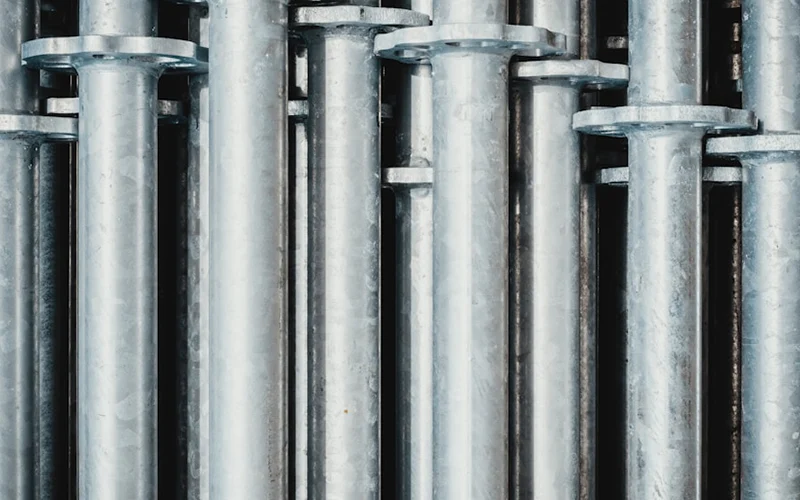
Anodizing: Anodizing is an electrochemical process that strengthens and protects metals, especially aluminum. The metal is immersed in an electrolyte using a dip coating process and an electric current is passed through it to convert the surface into a durable oxide layer. This electrochemical process makes the metal more resistant to corrosion and wear. You’ll see anodized aluminum on everything from kitchenware to aircraft parts – it’s strong and durable and can be dyed for a sleek, modern finish.
Enamel: Enamel coatings give metal surfaces a glass-like protective layer. The technique is similar to the powder coating application method: powdered glass is fused to the metal surface at high temperatures. Not only does enamel add a bright, shiny finish, it also protects the metal from stains and corrosion.
Metal Deposition: Metal coating involves applying a layer of metal, such as zinc or chrome, to protect the base metal. A protective layer that resists corrosion and increases durability is created through techniques such as electroplating, spraying, or chemical vapor deposition. You’ll find this coating on bridges, car parts, and electronics.
Chromate Coating: Chromate coatings provide an invisible barrier to metals such as aluminum, zinc, and steel. A protective layer is formed by immersing the metal in a chromate solution, which resists corrosion and improves paint adhesion. This process is often used before painting and is common in the aerospace and automotive industries – think of it as a must-have primer to keep the metal’s appearance intact.
Passive Films: Passivation is like putting an invisible cloak on stainless steel and aluminum. This thin, naturally occurring film forms on the surface, protecting the metal from corrosion while not changing its appearance. It is used in environments where metals are exposed to moisture and chemicals but need to maintain their clean appearance, such as food processing or medical equipment.
Phosphating: Phosphating creates a matte surface on metals through a chemical reaction with phosphoric acid. This coating consists of a thick, porous layer of tiny phosphate crystals that bond tightly to the substrate. Widely used in automotive bodies and household appliances, it provides a durable foundation for a long-lasting finish.
Nitriding: Nitriding hardens the metal surface by diffusing nitrogen into the metal surface at high temperatures, which can significantly improve wear resistance. Ideal for gears, engine parts and tools that are often used to withstand extreme pressure and friction over time.
Each of these coatings has a unique purpose, providing protection and durability to metals in a variety of environments. Whether it is enhancing the resilience of aluminum through anodizing or providing additional toughness to tools through nitriding, these coatings ensure that metals last longer and perform better.
Organic coatings VS Inorganic coatings.
When it comes to choosing a coating, it’s not a question of “better” or “worse” but rather choosing the right tool for the job. Organic and inorganic coatings each have their advantages. Let’s take a look at what is the difference between organic and inorganic coatings in a straightforward manner to help make the best decision.
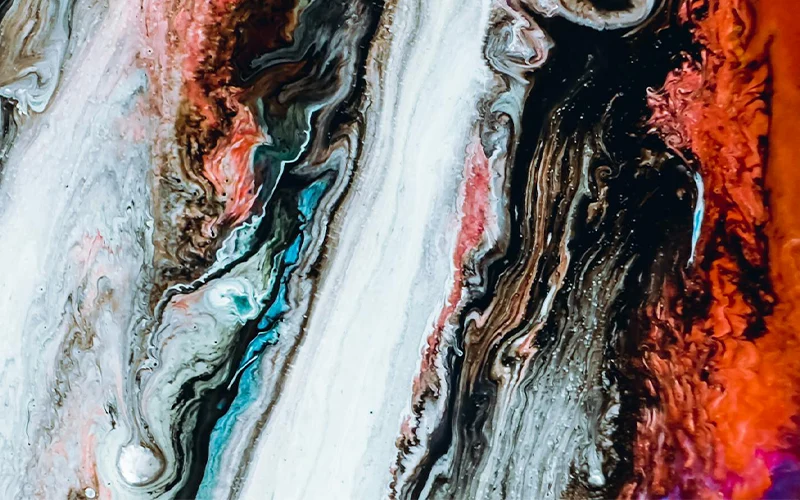
- Chemical structure:
The core of substances is their chemical structure. Organic coatings are mainly composed of carbon chain polymers, heterochain polymers and elemental organic polymers. Carbon chain polymers refer to polymers whose main chain is composed entirely of carbon atoms, such as polyethylene, polystyrene, etc. Heterochain polymers refer to polymers whose main chain is composed of two or more elemental atoms such as carbon, oxygen, nitrogen, and sulfur. Such as polyformaldehyde, polyamide, polysulfone, polyether, etc.
The main chain of elemental organic polymers does not necessarily contain carbon atoms, but is mainly composed of atoms of silicon, oxygen, aluminum, titanium, boron, sulfur, phosphorus and other elements, such as organic silicon. These are the compounds of life, flexible and adaptable.
Inorganic coatings, on the other hand, have a mineral skeleton with silicon, zinc, or aluminum as the primary components. Their structure is much more rugged and durable, and they can withstand extreme conditions that would cause organic coatings to crack. - Performance:
In terms of performance, both have their own merits. Organic coatings offer exceptional flexibility and toughness due to their carbon-based structure. They can withstand impact and are not prone to cracking, making them ideal for surfaces with movement or temperature changes.
However, inorganic coatings excel in environments where resistance to extreme conditions is required. Their mineral structure provides unparalleled protection against corrosion, heat and UV radiation. - Aesthetic Flexibility:
If you’re focused on appearance, organic coatings are the way to go. They can be produced in a nearly infinite variety of colors and finishes, providing more creative freedom for projects where appearance is the priority.
Inorganic coatings don’t have as much variety in terms of color, but they have a pristine, long-lasting aesthetic that’s perfect for environments where simplicity and strength are important. - Application Areas
Organic coatings are a great fit for automotive, home, and consumer products, where flexibility, ease of use, and aesthetics are key. You can apply them using methods such as brushing, spraying, or electrostatic spraying, and they cure at lower temperatures, making them more versatile in different environments.
Inorganic coatings, however, are the best choice for infrastructure. They may require higher temperatures or special equipment to apply (such as large immersion tanks), but the payoff is durability in harsh conditions—ideal for things like bridges and industrial equipment. - Environmental Considerations
Organic coatings, especially solvent-based ones, have been criticized for their volatile organic compound (VOC) emissions. However, advances in water-based organic coatings are addressing these issues.
Inorganic coatings are a mineral-based coating that typically has lower VOC content and generally meets stricter environmental regulations from the start.
So, which one is better? That depends on your specific needs. Organic coatings offer flexibility and design freedom, making them ideal for consumer-focused projects where appearance and adaptability are key. Inorganic coatings are reliable workhorses of infrastructure, valued for their unmatched strength and weather resistance.
In the end, it’s not a matter of choosing one over the other, but rather understanding what each coating type brings to the table and choosing the right one for the job at hand.
How to Choose Between Organic and Inorganic Coatings?
Choosing between organic and inorganic coatings is a decision that should be based on a variety of factors to ensure the best outcome for your project. Here’s a guide to help you navigate this decision-making process:
- Substrate Type: Consider the material of the surface you are coating. Organic coatings are more suitable for flexible substrates like wood or plastic, as they offer better adhesion and flexibility. Inorganic coatings, on the other hand, are ideal for rigid substrates like metal or concrete, where durability and corrosion resistance are paramount.
- Project Requirements:Assess the specific requirements of your project. If aesthetics are important, organic coatings offer a wider range of colors and finishes. If durability and protection are your main concerns, inorganic coatings are the way to go.
- Environmental Conditions: Consider the environmental conditions to which the coating will be exposed. Generally organic coatings are more susceptible to UV radiation and may degrade faster in strong sunlight. Inorganic coatings have excellent weather resistance and abrasion resistance, making them more suitable for outdoor, industrial equipment and marine applications.
- Cost-Effectiveness:Consider the cost implications of each type of coating. While organic coatings may be more affordable upfront, they may require more frequent maintenance and recoating. Inorganic coatings, while initially more expensive, often offer better long-term cost-effectiveness due to their durability.
- Application Methods: Think about the application method that best suits your project. Organic coatings are typically easier to apply, requiring lower temperatures and fewer specialized tools. Inorganic coatings may require higher temperatures and more specialized equipment, which could affect the overall cost and timeline of your project.
- Regulatory Compliance:Ensure that the coatings you choose comply with relevant environmental and safety regulations. Organic coatings, especially solvent-based ones, may have higher VOC emissions, which could impact air quality and health. Inorganic coatings, with their lower VOC content, may be a more environmentally friendly option.
If in doubt, use our smart filter function to select the target paint supplier or consult professionals who provide coating application services. They will provide valuable insights and suggestions based on their expertise and experience.
By considering these factors, you can make an informed decision about choosing organic or inorganic coatings for your project. Whether you prefer the flexibility and aesthetic variety of organic coatings or the resiliency and environmental compatibility of inorganic coatings, the key is choosing a coating that suits your specific needs. Ultimately, organic and inorganic coatings have earned their place in the pantheon of materials that protect and beautify our world, each playing their own role in humanity’s saga of continuous innovation.
Can Organic and Inorganic Coatings be Used Together?
Yes, in some cases, organic and inorganic coatings can be used together. Be familiar with the properties of each coating and leverage their complementary nature to achieve specific performance requirements. Here are some common scenarios where combining organic and inorganic coatings can bring benefits:
- Corrosion Protection: Organic coatings, such as epoxy or polyurethane, are often used as a primer to provide a barrier against corrosion. Inorganic coatings, such as zinc-rich primers, can then be applied over the organic coating to provide sacrificial protection against corrosion.
- Aesthetic Finish: Organic coatings are known for their wide range of colors and finishes, making them ideal for achieving desired aesthetic effects. Inorganic coatings, such as clear ceramic coatings, can be applied over organic coatings to enhance their durability and UV resistance without compromising their appearance.
- Chemical Resistance:Organic coatings may not always provide sufficient resistance to certain chemicals. In such cases, a thin film of inorganic coating, such as a ceramic or metallic coating, can be applied over the organic coating to improve chemical resistance.
- Thermal Protection: Inorganic coatings, such as ceramic coatings, are known for their high heat resistance. They can be applied over organic coatings to provide additional thermal protection in high-temperature environments.
- Abrasion Resistance:Organic coatings may not always be durable enough to withstand heavy abrasion. In such cases, a thin layer of inorganic coating, such as a hard ceramic coating, can be applied over the organic coating to improve abrasion resistance.
It’s important to note that the compatibility of organic and inorganic coatings should be verified before application. Consulting with coating experts or manufacturers can help determine the best combination of coatings for your specific application.
Health and environmental impacts of organic coatings.
In recent years, organic coatings have made significant developments not only in terms of performance, but also in terms of their impact on health and the environment. Traditional organic coatings often contain volatile organic compounds (VOCs) and hazardous air pollutants (HAPs), which are harmful to human health and the environment. However, modern organic water-based coatings have lower VOC and HAP content, making them safer and more environmentally friendly to use.
Emerging trends and innovations in organic coatings.
One of the most exciting trends in organic coatings is the development of sustainable and bio-based coatings. These coatings are made from renewable resources such as vegetable oils and resins, reducing their environmental impact. Of course, there are more new technologies coming out, For example:
- Nanotechnology: Emerging nanotechnology in organic coatings can improve properties such as hardness, scratch resistance and corrosion resistance. This new technology is already finding applications in automotive and aerospace, as well as precision electronics.
- Smart paint: It has the unique ability to respond to environmental stimuli. These coatings can change color, self-heal or release specific substances in response to temperature, light or humidity. For example: temperature indicating paint, self-cleaning coating, etc.
In addition, with the advancement of science and technology and people’s diverse needs, many high-tech technologies have emerged in organic coatings. If you want to know more about the development trends and new technologies of coatings, you can go to our corresponding blog to read.
In conclusion, the choice between organic and inorganic coatings depends on various factors such as substrate type, project requirements, and environmental conditions. By understanding the differences and benefits of each type, you can make the right decision for your specific needs. Remember, you can explore a wide range of coatings and connect with reliable suppliers on our platform, coatingsdirectory.com. Start your search today and find the perfect coatings for your projects!
Do organic paints have toxic smells?
Organic paints, particularly those based on natural ingredients, generally have lower levels of toxic odors compared to traditional synthetic paints. However, “organic” in the context of paint often refers to the chemical composition (containing carbon compounds) rather than being “natural” or “eco-friendly.” Some organic paints can emit volatile organic compounds (VOCs), which are responsible for the strong, sometimes toxic smell. It’s important to differentiate between low-VOC, no-VOC, and natural organic paints if odor and toxicity are concerns.
Does water based paint contain any organic material?
Yes, water-based paints may contain organic materials. While the primary solvent is water, these coatings may also contain organic pigments, binders and additives to improve performance and durability. The term “organic” as used herein refers to compounds containing carbon, not necessarily derived from living organisms. Compared to solvent-based coatings, water-based coatings have lower levels of volatile organic compounds (VOC).
Is epoxy paint organic or inorganic?
Epoxy paint is considered an organic coating. It is made from epoxy resin, which is a synthetic polymer, and hardeners that contain carbon atoms in their molecular structure, classifying them as organic compounds. Epoxy coatings are known for their durability, chemical resistance, and strong adhesion, making them a popular choice for industrial and high-performance applications.
Is latex paint organic?
Latex paint is generally considered organic due to its composition. The term “latex” in latex paint refers to the synthetic polymers (such as acrylic or vinyl acetate) that serve as binders, which are organic compounds. These synthetic polymers are dispersed in water, making latex paint predominantly water-based. Despite being called “latex,” modern latex paints do not actually contain natural latex from rubber trees.
Where Are Organic Coatings Most Effective?
Organic coatings, known for their versatility and protective qualities, excel in environments and applications where flexibility, aesthetics, and resistance to certain types of chemical exposure are paramount. Ideal for both indoor and outdoor settings, these coatings are particularly effective on surfaces requiring a vibrant appearance with various colors and finishes available. Examples include automotive paints that protect and enhance the visual appeal of vehicles, protective furniture finishes that resist wear and tear in domestic environments, and architectural coatings that safeguard and beautify buildings. Their formulation allows them to adhere well to a wide range of substrates, including metals, plastics, and wood, making them suitable for numerous projects from industrial equipment to consumer goods.
Where Are Inorganic Coatings Most Effective?
Inorganic coatings stand out in applications demanding high durability, temperature resistance, and protection against harsh environmental conditions. Their superior hardness and resistance to UV radiation make them ideal for protecting structures and components in highly corrosive or extreme temperature environments. Notable use cases include coatings for pipelines and storage tanks that must withstand prolonged exposure to chemicals and weather, heat-resistant coatings for exhaust systems, and anti-corrosive coatings for bridges and steel frameworks exposed to marine or industrial environments. Inorganic coatings are particularly effective on metal substrates, offering long-term protection and maintenance of structural integrity in demanding applications.

